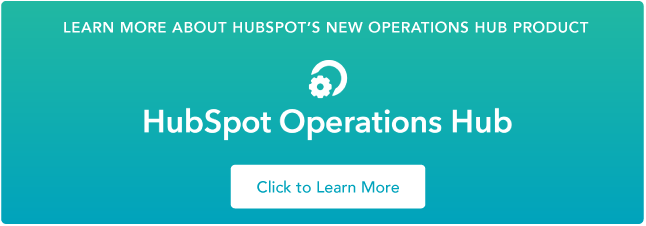Most businesses handle a tremendous amount of data on a daily basis.

Internet users generate about 2.5 quintillion bytes of data each day, and more and more organizations are investing in big data and artificial intelligence (AI). But how can your business make the most out of the data it has at its disposal?
Companies need to have a solid big data strategy to collect, process and analyze data. This is essential to make data-driven and informed decisions. A major component of an effective data strategy is data integration.
What's Data Integration?
Data integration means combining data from two or more disparate sources into one single source of truth. Throughout this process, data can be transformed or simply shared. Companies use data integration to obtain a unified view of their business. Depending on the business needs, you can integrate two sources completely or just certain types of data.
Integrating data enables organizations to access up-to-date, enriched, and valuable information about multiple areas in the business. Data about marketing performance, customer satisfaction, sales, and other processes become available across the company.
Simply put, data integration is essential to have a 360-degree view of your business and to empower you to make actual data-driven decisions. A 2019 survey found that 55% of data collected by companies is not used -- in other words, most companies have an untapped goldmine of data sitting in their systems.
With data integration, you can connect your software stack to ensure a continuous and effective data flow across your organization, making sure that all key players have access to the most relevant data when and where they most need it.
One of the best ways to achieve this is by employing integration software to combine the data within different applications in your software stack.
Data Integration Challenges
There are a multitude of solutions on the market to help you with this. However, even with so many resources available to create an amazing data integration strategy, there are still common mistakes to be avoided. Here's how to recognize and avoid them.
1. You have disparate data formats and sources
Your business is collecting data through a variety of applications, such as your accounting and billing software, lead generation tool, email marketing app, CRM, customer service application, and others.
Each one of these tools is accessed and maintained by different teams, and they each have their own processes for inputting and updating data. They might even be adding data into the system that already exists in other applications, or in different formats. For example, one team can be entering phone numbers into one application as (00) 555-5555, and another team is entering them in another application as +00 555 5555.
2. Your data isn't available where it needs to be
This results in your team wasting a lot of time and not having access to information that could make all the difference in the performance of their work -- which leads us to the second problem…
This is an issue that stems from the existence of data silos. Data silos are groups of data accessible by one department but isolated from the rest of the organization.
If there's no coherence as to how, who, and where to enter and update data, you inevitably end up with information silos across your organization.
Imagine that your marketing team is working on a new, highly personalized email campaign to your existing customers. As they're having discussions about how to collect customer data to create a more targeted campaign, your customer support team has been gathering exactly that kind of data -- and marketing knows nothing about it. The data sits inside your customer support software, while marketing is racking their brains trying to think of ways to get that information.
3. You have low-quality or outdated data
When you have no company-wide standards for data entry and maintenance - and when a lot of it still needs to be done manually -- you inevitably end up with inaccurate, outdated, and/or duplicate data.
Different departments might be inputting the same data into different systems, resulting in duplicates. Or, if your team needs to manually update data every so often, this can lead to mistakes in data entry or to huge amounts of data not being updated at all.
This can also happen if you go long periods of time without organizing your databases.
As a result, your data is inconsistent and untrustworthy -- and if you can't trust your data, you can't trust the analysis you get from it.
4. You're using the wrong integration software for your needs
Even if you're already using integration solutions to connect your software ecosystem, you can fall into the trap of using the wrong type of software for what you need -- or you might even have the right software, but you're using it the wrong way.
For example, you might be using a trigger-based integration to have the databases of two apps aligned. However, this solution doesn't sync historical data (data that was entered into your tools before the integration was set up) and it only pushes data from one platform into another. If what you want is for these databases to be synchronized, you'll need a two-way integration.
5. You have too much data
There is such a thing as too much data. If your company is collecting data indiscriminately, you end up with a lot of information you don't need, and it could be burying the valuable information beneath it. It's just like object hoarding: if your drawers are full of things you don't need, it makes it a whole lot harder to find the things you do need in the mess, and it takes you a lot more time to find it, too.
This problem is amplified if you're collecting data from multiple channels without a proper data management system in place. With the sheer amounts of data being created daily, it becomes a big challenge to manage, analyze, and extract value from your data when you can't find the signal in the noise.
How to Create a Top Data Integration Plan
If you're facing any or all of these challenges when coming up with a strategy to integrate your organization's data, fret not -- there are a few steps you can take to make sure your data integration plan goes smoothly.
1. Clean up your data
Cleaning up your data is an absolutely critical step to take before even thinking about integrating your software ecosystem. The first thing you need to do is to take a look at your existing databases and:
- Clean up duplicates. You can use a de-duplicator tool such as Dedupely, for example. Your applications might also have an option to scan and merge duplicates. This is present in some CRMs and contact management tools, like Google Contacts.
- Scan your tools for outdated or invalid data. This includes emails that keep bouncing back on your email marketing tool, phone numbers with invalid formats, contacts with a misspelled name, etc. Get rid of this data - it's not doing you any good!
- Take a long, hard look at the channels through which you collect data and think about how you can optimize this. For example, if you have a form on a landing page full of unnecessary information fields, remove these from the form, and only collect data you actually need. In addition, make sure that you are compliant with data protection policies such as the General Data Protection Regulation (GDPR).
Cleaning up your databases might be time-consuming, but if you do it right and then set up an integration tool, you only need to do it once. Taking care of this will improve the quality of your data across the board and enable a seamless and effective integration process.
2. Introduce clear processes for data management
Next, introduce company-wide standards for data entry and maintenance. Data ownership is an important part of this: that means assigning one team or individual to be responsible for the quality and management of your data. They'll need to ensure that everything that enters your systems is up to code according to company policies and strategy.
If this isn't feasible for your organization, make sure to train all team members on how to correctly input and update data, as well as educating them on how your tools are connected.
By introducing company-wide protocols for data entry and management, you can significantly reduce the amount of low-quality, outdated or duplicate data in your system.
3. Back up your data
Before moving on to the actual data integration, an important -- and often overlooked — step is to back up your data. Your applications may already offer an option to back up your data, so check that this is possible with your software provider. You can back it up to the cloud or do a physical hard drive - or even both, if you want to be extra safe.
Once your data is cleaned up and backed up, you can move on to the actual integration.
4. Choose the right software to assist you with data integration
Having the right integration software to fit your needs is essential. It automates a huge part of your data management tasks and automatically syncs data between the applications in your software stack, drastically reducing the need for manual data entry, unifying data formats, and reducing the scope for error.
Integration software is the string that ties everything together in your stack. It ensures a continuous flow of data between different applications and makes sure that each team has access to the right information at the right time.
Before choosing an integration solution, you need to answer the following questions:
- What kind of data needs to be integrated?
- Which of your applications need to be integrated and how?
- How should the data flow within the organization? Do you need a one-way or two-way flow of information?
- Do you need constant, real-time sync or trigger-action data pushes?
There are different kinds of integration platforms that work best for different use cases. You may want to use in-app integrations offered by the tools you're already using, or you may need to use a third-party integration platform or Integration Platform as a Service (iPaaS) provider.
Once you've assessed exactly what you need from an integration solution, you'll be in a much better position to choose the right software for you. If the tools you're using already offer native integrations that fulfill all of your requirements, that's a great starting point.
However, if those don't exactly fit your bill, deploying an iPaaS tool is a great idea. These tools include platforms like Zapier, Tray.io, and Automate.io, which specialize in automating workflows and one-way data pushes. These would allow you to create trigger-action workflows across your entire software stack.
If you need a continuous, real-time sync of your customer data, a tool like Operations Hub will probably work best for you. Operations Hub keeps your contacts flowing between your databases two ways and in real-time, which means that every time you change or update any contact data, that change is reflected in your other apps too. This also applies to data that was created before the sync was set up.
You might even decide that a mixture of integration software is the best for you, such as using Zapier to push some basic data one-way and Operations Hub to sync customer data across your tools.
5. Manage and maintain your data
These steps will help you automate huge parts of your data management strategy and make sure your organization has consistent, up-to-date and valuable data, which in turn will help you extract much better insights to make data-driven decisions.
But data management is an ongoing process: you still need to check in on your databases every so often to make sure everything is running smoothly, ensure that your team is following the correct processes, check if your existing tools are working as well as they should, and determine if any parts of your strategy need to be updated or adapted. This is especially important if your business is growing - your data integration strategy will likely need to evolve with you as you grow.
By being aware of these challenges and knowing how to tackle them in your data strategy, you'll be in the best position to collect and analyze the data your organization has at its disposal and make actionable, data-driven decisions.










![What are ISVs? [Examples, Benefits, and More]](https://blog.hubspot.com/hubfs/ISV.png)
